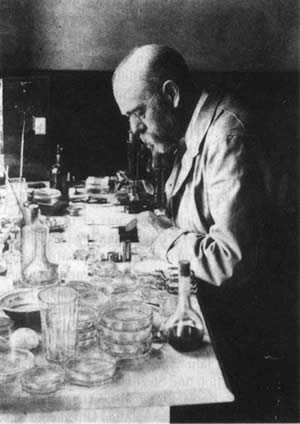Koch’s Postulates: Examining the Existance of Viruses and the Effectiveness of Vaccinations
Looking at scientific information regarding viruses and their effects on humans, a closer look at the information actually shows that diseases which are associated with a virus are not really caused by a virus. In fact, many people are surprised to learn that there is no such thing as an infectious disease virus.
Keep in mind, there are many diseases that have vaccinations to work against specific viruses, including: hepatitis, smallpox, polio, measles, influenza, chicken pox, mumps, rubella, Varicella-zoster (shingles), meningitis, rotavirus, and human papillomavirus (HPV).
A German physician named Robert Koch and a bacteriologist, Friedrich Loeffler, researched viral diseases and came up with a hypothesis around 1890. They suggested that if viruses caused disease, we should be able to isolate the virus organism, and in turn use that organism to start the same disease in another animal that was otherwise healthy. Koch’s postulates were written according to these critera.

Koch’s Postulates for the Isolation of a Virus
1. The microorganism must be found in abundance in all organisms suffering from the disease, but should not be found in healthy animals.
2. The microorganism must be isolated from a diseased organism and grown in pure culture.
3. The cultured microorganism should cause disease when introduced into a healthy organism.
4. The microorganism must be reisolated from the inoculated, diseased experimental host and identified as being identical to the original specific causative agent.
These postulate seem to make sense. But the problem is that we are forced to take on faith, without scientific proof, that viruses today have been isolated and discovered following these terms to denote scientific proof.
Koch’s Postulates Debunked
Since Koch’s time, technology has improved. These improvements should allow science to be able to prove conclusively, according to Koch’s postulates, that viruses exist… and a virus should have been isolated under the microscope. The problem lies in the fact that no one has been successful in isolating any viruses, so we still need scientific proof that they exist. If this astonishing scientific discovery was true, one would expect the medical industry to make the announcement that viruses causing disease do not actually exist. But instead of bringing forth the truth, something far more sinister has occurred: they pretended to use Koch’s postulates to have isolated the virus. Even though they could not isolate a virus clearly, they have claimed that a virus existed.
To put it bluntly, there is no such thing as a virus. If scientists suggest that they have isolated a virus, what it means is that they really have isolated is a cellular mass material in which a virus is thought to exist. Filtering the material from sick animals which are believed to have a disease, and then placing the material with other cells in a Petri dish, and then watching the cells die has made the researchers believe that they have discovered a deadly virus. Next, some of these partially filtered and blended animal parts are searched for RNA strands. If an RNA strand is found, then they make the announcement that they have “mapped” the virus.
Why have I been told it was a virus is if it isn’t real?







